Dolton Mayor Jason House said the village’s purchase of the former home of Robert Francis Prevost, now known as Pope Leo XIV, is a once-in-a-lifetime opportunity.
A steering committee will look at possible uses for the house, including restoring it to how it appeared when Prevost and his family lived there decades ago.
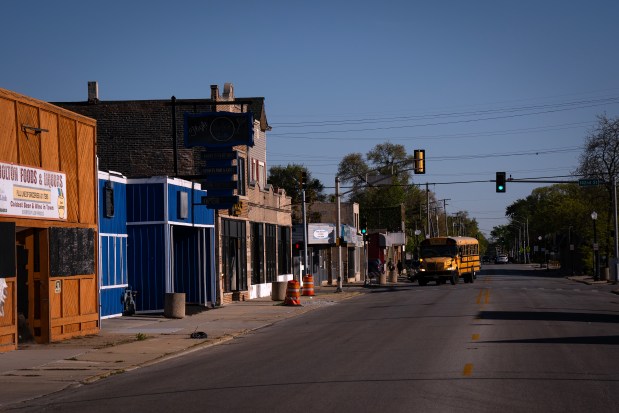
But restoring the world Prevost grew up in and around Dolton is not possible. The village has evolved, and many of the boyhood haunts that he and children his age may have frequented, including movie theaters and dime stores, are now empty buildings and photos in history books.
Prevost was born Sept. 14, 1955, at Mercy Hospital in Chicago and lived in Dolton with his parents and two brothers. The future pontiff attended St. Mary of the Assumption parish on Lincoln Avenue, across the street from the village in the Riverdale community of Chicago. Prevost attended school there, sang in the choir and served as an altar boy.
“St. Mary’s School and Parish served as a real central hub for the community,” said Marlene Cook, a Dolton historian. “There were a lot of activities there.”
Cook moved to Lansing in 1958 as a young mother, just three years after Robert Prevost was born. His family lived in the Ivanhoe neighborhood of Dolton, she said, so she didn’t know him.
Cook later, in the 1980s, worked as Dolton’s full-time community relations manager.
Mary Ann Henry, 92, attended St. Mary’s and sent her own children there while living in Dolton.
“Everybody who was Catholic sent their kids to the Catholic school in those days,” said Henry, who relocated to Homewood.
Henry said one of her daughters attended school at the same time as Prevost but, like Cook, she didn’t know him because they lived in a different part of town. However, she has fond memories of his mother, Mildred, occasionally serving the students hot lunch.
“They had the best sloppy joes going,” Henry said.
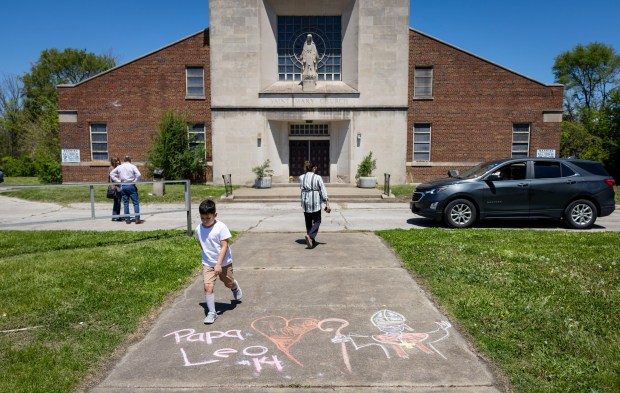
St Mary of Assumption was founded in the 1880s and constructed its first building from donated lumber at 137th Street and Indiana Avenue, land that had been “practically” donated by railroad magnate George M. Pullman, according to Marlene Cook’s history, “Dolton Tattler: Fact, Fiction and Folklore.”
A brick church sanctuary and school building was built in 1916, and the modern church Prevost attended was built in 1956, a year after he was born, at 138th Street and Leyden Avenue. St. Mary’s school closed in 1989 because of declining enrollment.
Papa Damiani’s Pizza
Chief to the neighborhood around the school was Papa Damiani’s at 138th Street and Lincoln Avenue in Dolton, a spot so beloved that former customers have set up a Facebook group in its honor.
Henry said the restaurant’s proximity to the school made it a top hangout spot for students and parents alike. She said that after monthly sodality meetings, she and other women skipped the cake and coffee, instead walking across the street for pizza at Papa Damiani’s.
“We were out free that night,” Henry said.
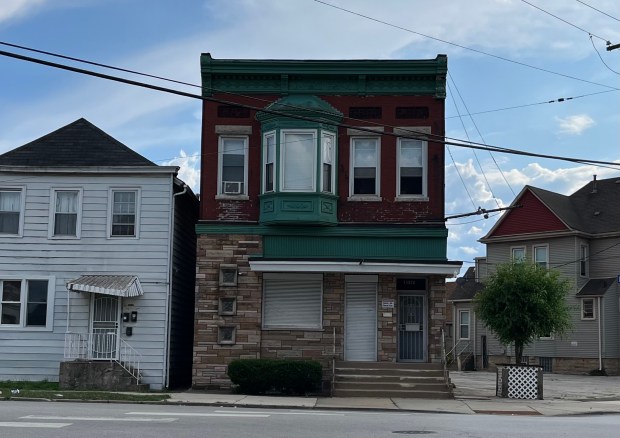
The restaurant was referenced in a 2007 story from The Star as integral to the area that boomed as the Acme Steel Co. supplied jobs along the railroad from 1918 until it filed for bankruptcy in 1998.
Downtown Riverdale
Growing up, organized Little League Baseball was a major asset to community life, as a park was located on all four corners of the intersection of the Metra tracks and 144th Street in Riverdale’s Ivanhoe section.
Residents described 20th century north Riverdale as walkable and conveniently situated to take the Illinois Central trains to Chicago’s Loop.
“I could walk to church and all the stores along 144th Street. There was no need to drive much,” Mary Thillman told The Star at the time.
Value Village
Cook and Henry said another hub of the community was Horney’s Dime Store in Dolton, later Value Village, on 142nd Street at Chicago Road, now named Martin Luther King Drive.
“It really was an old-fashioned dime store that had just about everything you wanted. It had old wooden boards on the floor that would creak when you walked on them,” Cook said. “It had been there a long time before I got there. It burned down in the late ’70s.”
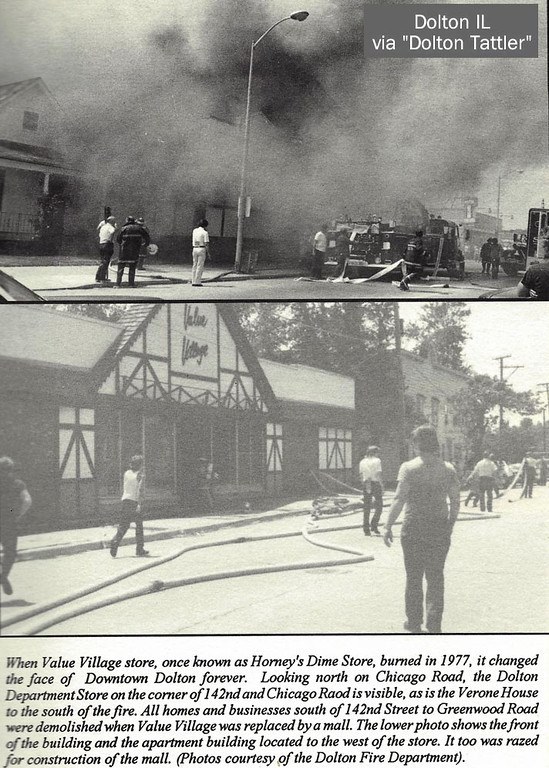
Henry also recalled the wooden floors as a hallmark of the store.
“You could always tell where your kids were, because you could hear them,” Henry said. “It was on the corner, and everybody did all kinds of shopping at that place.”
Horney’s store was later expanded into Value Village, and founder Henry Horney opened several stores in Illinois and Wisconsin, none of which is still in business.
He ran Horney’s Dime Store for nearly 50 years, according to an August 2021 obituary for Horney in the Chicago Tribune. The original store burned in a 1977 fire, Cook wrote, but was rebuilt as part of a shopping center on the corner.
Horney had been a manager at a Woolworth’s store before starting the small Value Village chain. The Dolton store closed in 1989, according to the obituary.
Movie theaters
Cook said children from the area in the early and mid-1960s would go to the Lansing movie theater and the ice cream shop down the street. On Saturday mornings there was a kids’ matinee, and a magician would perform.
The Lans, 3524 Ridge Road, later became Pipes and Pizza, using the theater organ for entertainment while customers dined on pizza, with tables replacing the theater seats. WGN meteorologist Roger Triemstra owned it along with some cousins.
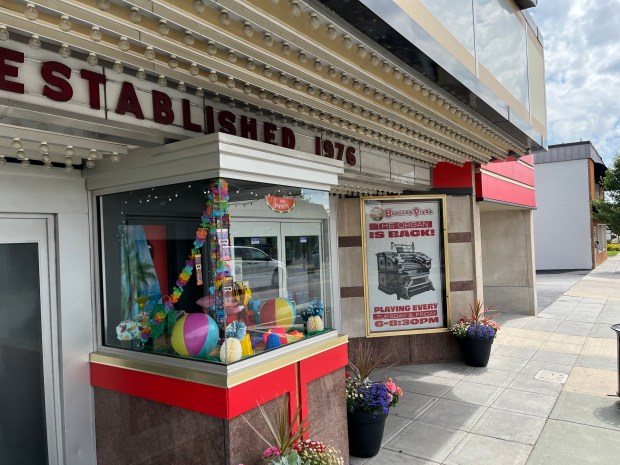
It was later sold and became a Beggars Pizza, but still operates with a sign out front noting the organ is back.
“The organ sits at the back of what once was a movie theater,” according to a Tribune article from 2019. “The expansive system of pipes stands where the screen once did, while sets of marimbas, drums and other accompanying instruments that the organ controls are displayed on shelves above the dining area.”
The Depot Ice Cream shop was housed in a former Amtrak dining car about a block from the theater. It no longer exists, nor does the train line that ran alongside it. A skate park now occupies much of the area.
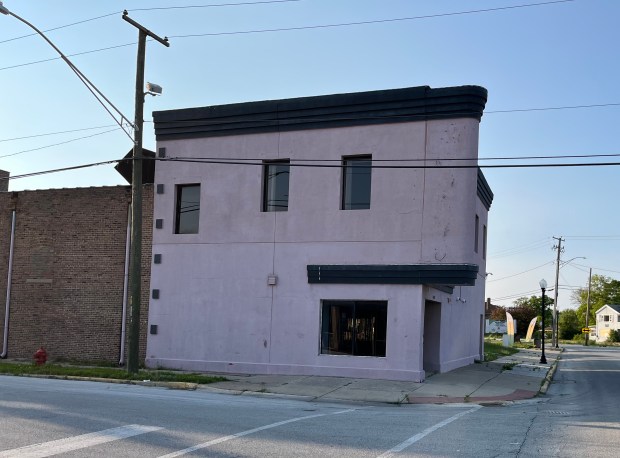
In downtown Dolton was the Dolton Theatre, a movie house that showed first-run films and also cartoons and special features. It was down the block from what Cook said was another gathering spot, the Dolton House Restaurant.
Henry said she remembered kids frequenting the Dolton Theatre on Saturdays, sometimes staying until it closed on summer days.
“They’d spend the whole day re-watching the movie over and over,” Henry said. “They’d never throw them out unless they were causing trouble.”
Dolton Park
“Dolton Park had all kinds of activities. Tennis courts, baseball diamonds and swing sets for the little kids,” Cook said. “They had the Fourth of July carnival there. The whole town was there all the time. Everyone went to the carnival and everyone volunteered to work booths at the carnival.”
The carnival was held on park grounds behind Franklin School, 147th and Martin Luther King Jr. Drive.
The July 4 parade and carnival was started in the 1930s by the village’s volunteer fire department, but it didn’t become an official village event until 1945, according to Cook’s history of Dolton. The annual tradition continued well into the 1990s.
“For four days and four nights around the Fourth of July, Dolton Park became a paradise for me and all the other kids in the neighborhood,” wrote Mike Walker, a Dolton native who shared snippets about his childhood in his book “Chicago Shorts.”
“All the coolest kids at the carnival walked around with colored wooden walking canes, won by throwing little plastic shower rins around the cane of your choice,” he said.
Another history book of Dolton covering from 1892 to 1976, created by The Shopper community newspaper, said a group of residents organized the Dolton Boys Baseball Team in 1964 “to provide an opportunity for all boys in Dolton to play baseball.”
The league began with 120 players aged 9 through 12 who were separated into eight teams, the book stated. The league leased land from the former Kaiser Aluminum located at 142nd Street and Woodlawn Avenue, which the Dolton Park District purchased for public use in 1974.
Ivanhoe Manor School
Prevost attended Ivanhoe Manor School in Dolton for kindergarten, said classmate Mary Jean Carr. The school, which is now closed, was located where what now is District 148’s Early Learning Center, Harriett Tubman school, sits on East 142nd Street.
Prevost attended St. Mary’s School for this rest of his elementary education.
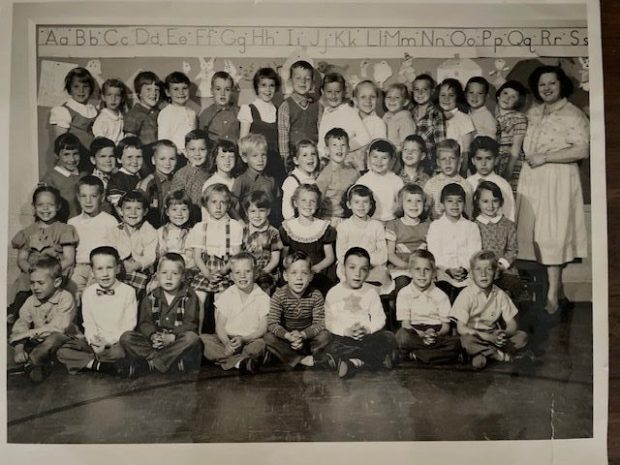
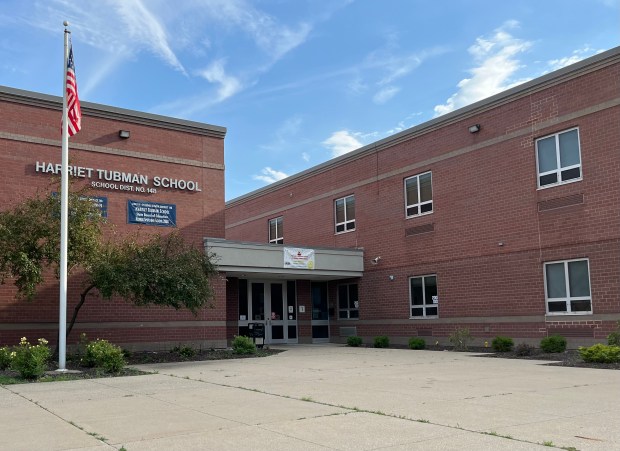
Tolentine Monastery
After graduating from St. Mary’s in 1969, Prevost attended St. Augustine Seminary High School in Michigan. Then he briefly lived at the now-shuttered Tolentine seminary in south suburban Olympia Fields before attending Villanova University in Pennsylvania.
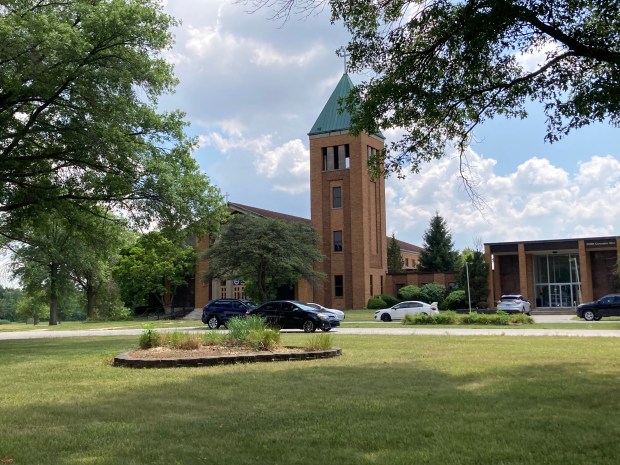
The 101,000-square-foot complex, sitting on a 112-acre campus, opened its doors in 1958 as a college seminary for young men entering the Augustinian Order of the Catholic Church, according to a 1986 Tribune article.
It was named in honor of St. Nicholas of Tolentine, Italy, the first member of the order to be canonized by the church. In 1968, the Augustinians opened the college to lay students from the community, offering them a liberal arts education while continuing religious education for the seminarians.
When the Catholic Theological Union opened in Chicago`s Hyde Park, however, many of the theological students began to transfer there, resulting in a financial burden that proved too great for the college. It closed in June 1974.
But the property along Governors Highway still operated for years as St. Nicholas of Tolentine Monastery and later a residence for retired Augustinian priests and monks.
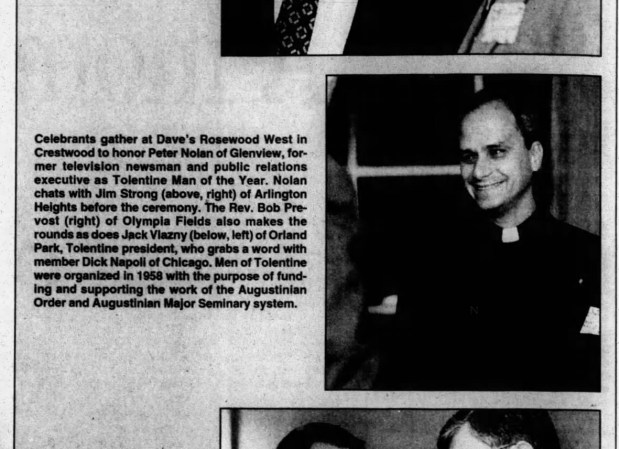
In 1999, Prevost was likely residing at the facility. The Oct. 28, 1999 edition of Star Newspapers included coverage of the Men of Tolentine presenting a Man of the Year award to former newsman Peter Nolan at Dave’s Rosewood West in Crestwood, including a photo of a smiling Prevost. “The Rev. Bob Prevost of Olympia Fields also makes the rounds…” the caption states.
The Tolentine property continued to be used by the Augustinians until at least 2009, and it later was operated by All Nations Assembly church. The property, at one point, was listed for sale for $5.5 million. In late 2020 and early 2021, a residential drug and alcohol treatment facility was proposed for the former monastery, but the proposal never advanced amid opposition from area residents.
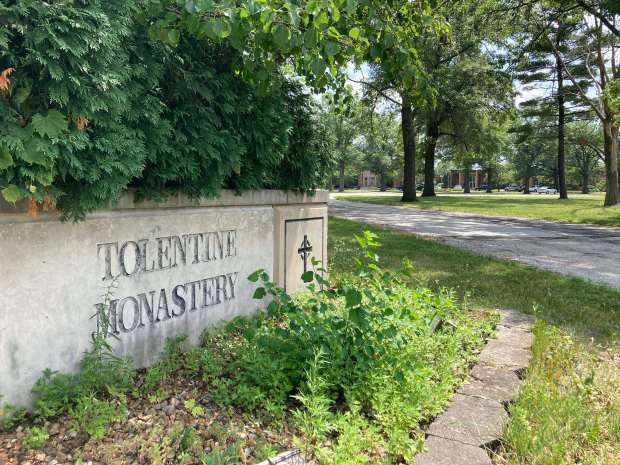
Aurelio’s Pizza
Near Toletine is one of the first places to establish a bona fide connection to the Prevost family, and a place that skill exists: Aurelio’s Pizza in Homewood.
Joe Aurelio doesn’t know for sure but he said there’s a good chance Prevost grew up on his family’s pizza. But Robert Prevost did visit the restaurant last August to catch up with old friends while visiting the area to speak to parishioners at St. Jude Catholic Church in New Lenox.
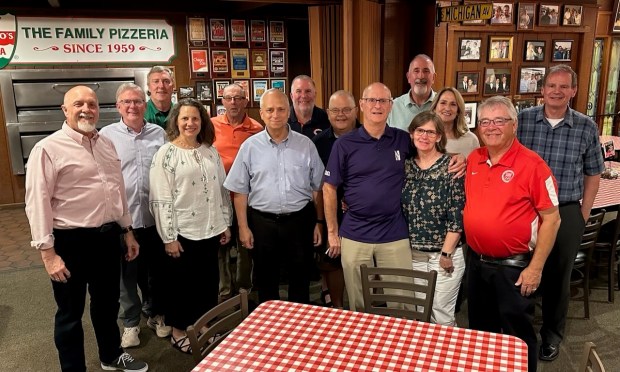
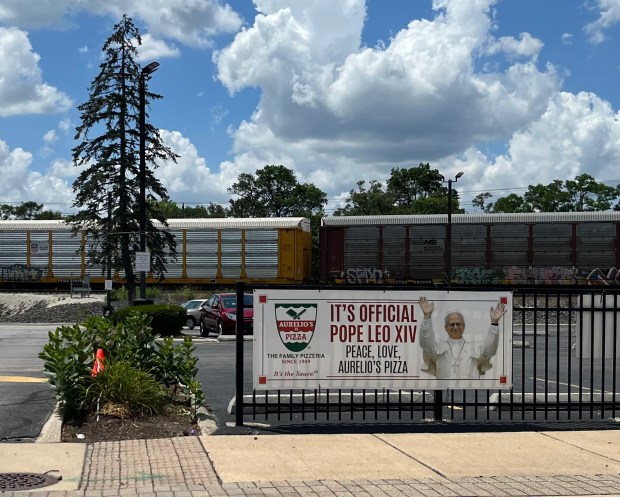
Aurelio’s now markets its restaurant using images of the pope, and has installed a pulpit chair where he sat during a visit in August.
Whether Dolton will be able to market his boyhood home remains to be seen. The village bought the house for $375,000, and the village’s mayor said officials are talking with various interested partners in plans for reusing the home.
The pope’s parents — Louis Prevost, a school administrator who died in 1997, and Mildred, a librarian who died in 1990 — owned and lived in the brick house for decades. Louis Prevost sold the home in 1996 for $58,000.
The future pontiff lived in the house full time until going off to a Michigan seminary for high school in 1969.
Last year, Homer Glen-based home rehabber Pawel Radzik paid $66,000 for the home, and at one point had in on the market for sale, but pulled it after it was learned it was Prevost’s childhood home.
The home was built in 1949 and Radzik told the Chicago Tribune in May that about 80% of the home had been renovated, including a new kitchen and flooring.
